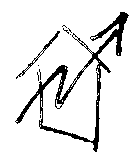Character flipping programming interview problem
Programming interview question from the Daily Coding Problem email list. I have it as #1602, but other folks have it as #331 from 2020. I guess I missed it back then.
Daily Coding Problem: Problem #1602 [Medium]
This problem was asked by LinkedIn.
You are given a string consisting of the letters x and y,
such as xyxxxyxyy.
In addition,
you have an operation called flip,
which changes a single x to y or vice versa.
Determine how many times you would need to apply this operation to ensure
that all x’s come before all y’s.
In the preceding example,
it suffices to flip the second and sixth characters,
so you should return 2.
Repo for code.
Analysis
First, it’s a little tricky to examine a string and
say that all x’s come before all y’s.
If the problem guaranteed that at least 1 x and 1 y
appeared in each input string,
you could ignore the cases of all-‘x’ or all-‘y’ strings.
There’s also the case of a zero-length input string,
which I’m going to say does indeed have all zero x’s
before all zero y’s
Second, the problem statement doesn’t say to return the minimum number of flips, but rather how many to ensure the desired condition. The example does imply the minimum number of flips is desired, but who really can say?
Third, does an all-single-character string, xxxx say,
require 0 (zero) flips, or does it require 1 flip to get xxxy?
Another hidden imperfection in the problem statement.
Even the example input string, xyxxxyxyy,
can be made correct 2 different ways with 2 flips:
xxxxxyyyy, flip 2nd and 7thxcharactersxxxxxxxyy, flip 2nd characterx, and 6th charactery
I chose to do a Go-enabled algorithm:
- Specify a data type that can contain the number of flips,
and the string that has all
x’s before ally’s. - Create a channel that can carry pointers to the data type.
- Write a function that checks if its input string meets the criteria, and if so, creates an instance of the data type, fills it out with the current string and flip count, then puts it on the channel and returns. Otherwise, recurse after flipping.
- The
main()function starts the function from (3) in a goroutine, then read strings and flip counts off the channel until it’s closed.
The function of step 3 that I wrote has a signature like this:
func fliprecurse(ch chan *xBeforeY, str []rune, ln int, idx int, flipCount int)
ln is the string length, pre-calculated to avoid repetitious invocations of len().
idx is the index in the string str the function should work on.
Unfortunately, there’s 3 places to return from recursion:
- If
strmeets the criteria of allx’s before ally’s - If
idxis past the last character instr - After recursing on
idx+1. I think you have to recurse twice, once without flipping character atidx, once after a flip atidx.
Interview Analysis
Although this problem appears to be concise and correctly phrased, it has some hidden ambiguity. If the interviewer is aware of this, and wants candidates to ask clarifying questions, that’s great. The interviewer has the burden of being prepared for questions. If the problem statement were something like formal requirements, it would be poorly done.
The candidate almost has to ask clarifying questions,
some of which aren’t going to present themselves until it’s time to
write the code for “all x’s before all y’s”.
Does this rate a “[Medium]”? I think so. There’s not much in the way of data structures, but there’s tricky coding in assessing whether or not a string meets the criteria. Any way of doing the work requires some fiddly algorithm programming. My way required 3 places to return from recursion.
Despite bagging on the phrasing of the problem statement, this might be a good interview question. The interviewer would get to see some actual coding, and hopefully see how a candidate deals with ambiguous requirements. The interviewer might also hope to understand how the candidate communicates.
